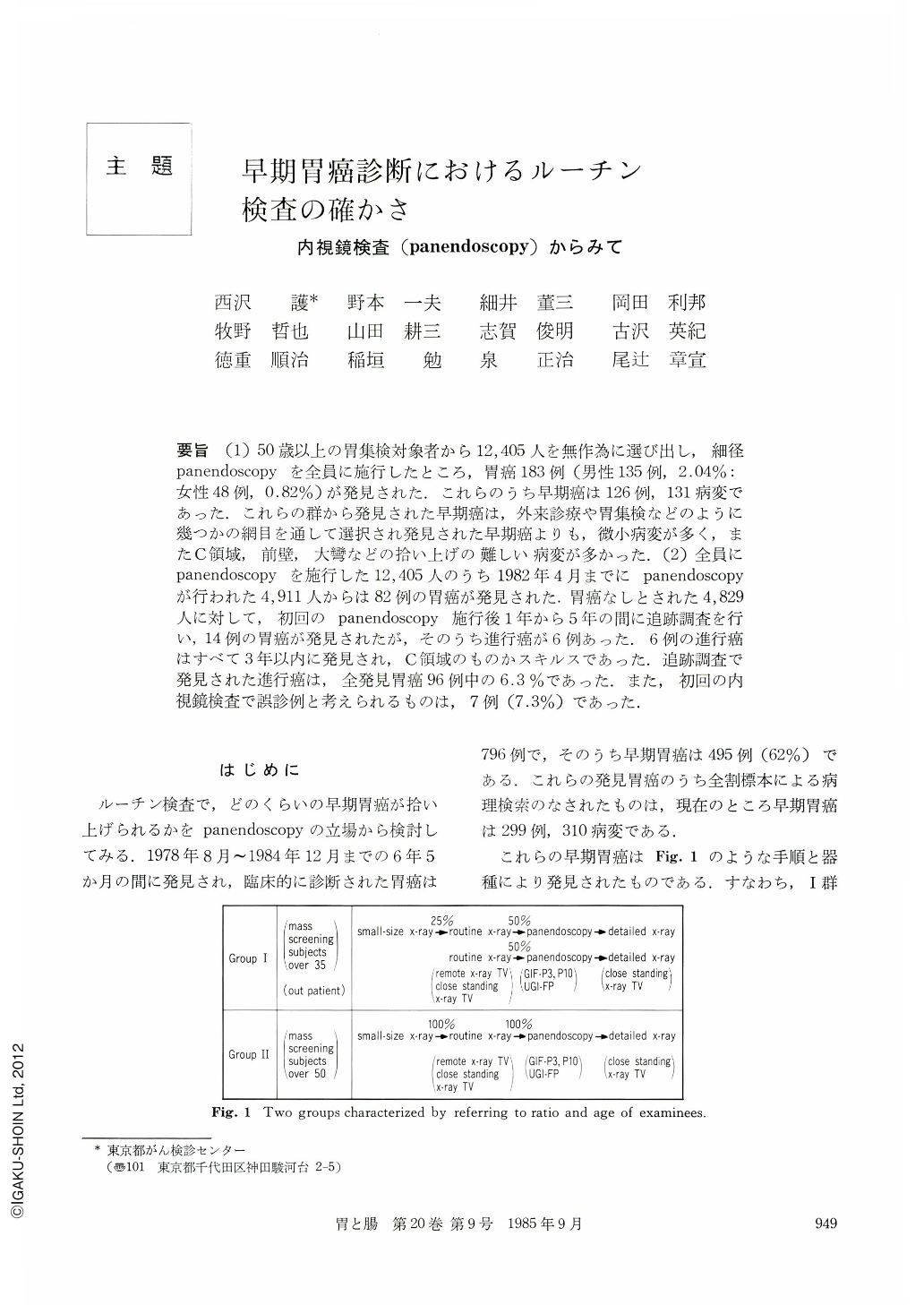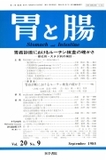Japanese
English
- 有料閲覧
- Abstract 文献概要
- 1ページ目 Look Inside
- サイト内被引用 Cited by
要旨 (1)50歳以上の胃集検対象者から12,405人を無作為に選び出し,細径panendoscopyを全員に施行したところ,胃癌183例(男性135例,2.04%:女性48例,0.82%)が発見された.これらのうち早期癌は126例,131病変であった.これらの群から発見された早期癌は,外来診療や胃集検などのように幾つかの網目を通して選択され発見された早期癌よりも,微小病変が多く,またC領域,前壁,大彎などの拾い上げの難しい病変が多かった.(2)全員にpanendoscopyを施行した12,405人のうち1982年4月までにpanendoscopyが行われた4,911人からは82例の胃癌が発見された.胃癌なしとされた4,829人に対して,初回のpanendoscopy施行後1年から5年の間に追跡調査を行い,14例の胃癌が発見されたが,そのうち進行癌が6例あった.6例の進行癌はすべて3年以内に発見され,C領域のものかスキルスであった.追跡調査で発見された進行癌は,全発見胃癌96例中の6.3%であった.また,初回の内視鏡検査で誤診例と考えられるものは,7例(7.3%)であった.
One hundred and eighty three cancer cases detected out of 12,405 gastric mass screening subjects taken as a random sample over 50 years of age. They all underwent direct x-ray, followed by panendoscopic examination. The detectability rate was 2.04% (135 males) and 0.82% (48 females). 126 cases (131 lesions) were detected as early cancer.
Those early cancers (Group Ⅱ) detected are more likely to be in a smaller size range than those (Group Ⅰ) detected by conventional mass screening or at outpatient clinics. Furthermore, lesion on the anterior wall site, in the upper part and along the greater curvature tend to be detected more frequently in Group Ⅱ than Group Ⅰ.
Approximately 25% of the cancers were not well visualized on routine x-ray images many of them being located in the upper part of the stomach, on the anterior wall site and along the greater curvature.
In contrast, approximately 10% of cancers impossible to visualize on detailed x-ray images were Type-Ⅱb or minute cancer.
From the 12,405 samples, 4,911 were followed up, of which 82 were initially diagnosed as cancerous. 1,189 cases were examined endoscopically, 3,640 cases by means of aquestionnaire. A total of 14 cancers were detected, 6 advanced and 8 early. The advanced cancers were detected over a 3 year period, all located in the upper part of the stomach, and were predominantly scirrhus cancers.
Eighty two cancers had been detected initially, making a total of 96 cancer cases. The six advanced cancers therefore represent 6.3% of the total.

Copyright © 1985, Igaku-Shoin Ltd. All rights reserved.


